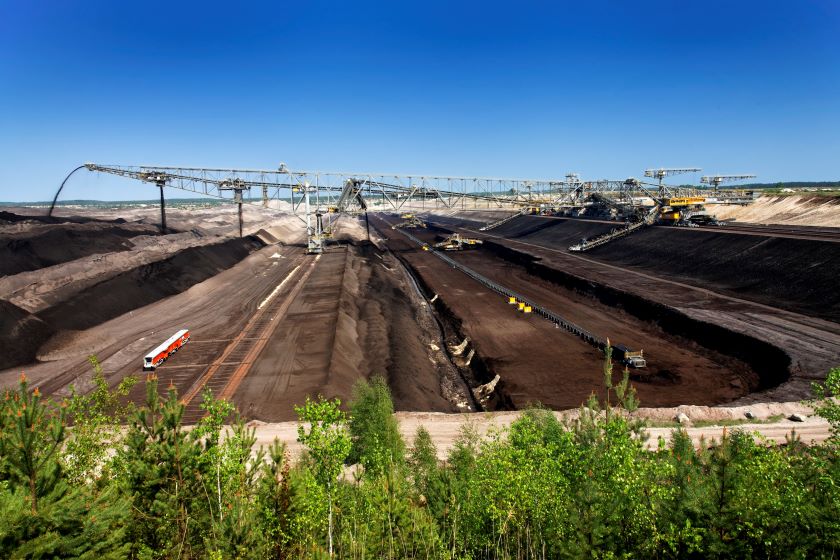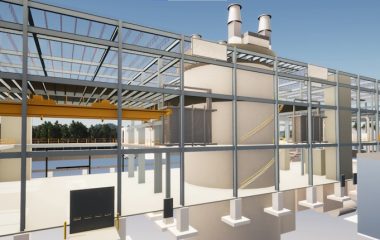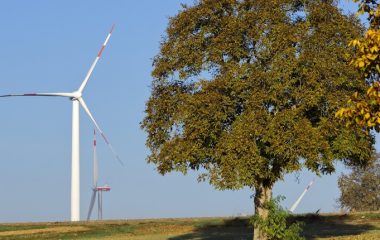
Photo: Frank Vincentz / Wikipedia / https://creativecommons.org/licenses/by-sa/3.0/deed.en
LEAG has announced it would transform its lignite-fired thermal power plants and open-cast pits in eastern Germany into Europe’s largest green energy hub, with a capacity between 7 GW and 14 GW. The project will utilize wind and solar energy, innovative battery technology, and hydrogen. The initial phase involves a EUR 200 million investment to convert the Boxberg coal plant into the biggest renewable energy storage system in the country.
LEAG, the second-largest producer of electricity from coal in Germany, plans to transform its complex of thermal power plants and coal mines in the Lusatia region in the eastern part of the country into the biggest green energy hub in Europe.
Last week, the company estimated that by 2040, it would install between 7 GW and 14 GW of wind and solar energy capacity, along with up to 3 GWh of storage capacity and 2 GW for green hydrogen production. The transition is aimed at replacing 8 GW of coal power capacity.
Pilot energy storage project at the Boxberg TPP site
After closing the mines, the company plans to utilize the existing infrastructure for energy storage from renewable sources. LEAG is also considering the possibility of installing floating solar power plants, as some of the open cast coal mines will be turned into lakes.
The company plans to utilize the existing infrastructure for storing energy from renewable sources after it closes the mines
The company intends to invest EUR 1.5 billion in renewable energy by 2030 and aims to install wind farms and solar power plants with a total capacity of 7 GW on the mining sites.
The largest battery system in the country is set to be installed at the location of its Boxberg power plant, situated on the border with Poland.
LEAG has signed an initial agreement with American energy storage system manufacturer ESS Tech. The company claims its large duration energy storage (LDES) battery technology, utilizing iron, salt, and water, offers the lowest costs and that it is environmentally safe.
LDES systems can provide electricity for at least ten hours at maximum operational power. The two companies are planning a 50 MW facility with a capacity of 500 MWh, alongside weaker lithium-ion batteries and hydrogen storage.
The Boxberg thermal power plant is the first in line for the switch to renewable energy storage, with plans to make it operational by 2027. The 2.6 GW facility was commissioned in 1971.
LEAG has announced that, along with its partners, it earmarked initial EUR 200 million and that it would seek additional investors as well as subsidies from the German government and the European Union. The entire project is estimated to cost EUR 500 million.
Utility has 7 GW in renewables in project pipeline for 2030
LEAG, owned by Czech companies EPH and PPF Investments, plans to connect a total of 7 GW of wind farms and solar parks to the grid before the end of the decade. The projects would occupy an area of 33,000 hectares or 330 square kilometers, on former coal mines. The energy giant estimates that it will require EUR 10 billion euros for the endeavors.
Last year, the utility announced its pioneering project, GigawattFactory, for its first gigawatt of solar power, operational by early 2026. The construction is expected to cost over EUR 1 billion, it said. LEAG anticipates that over 1,000 employees would be directly or indirectly involved in the project, while its complex currently employs around 8,000 workers.

The existing infrastructure in the coal complex facilitates the transition to green energy
The existing power grid and other infrastructure can be utilized for the proposed thermal and electricity storage facilities on former open pit mines and closed coal plants.
LEAG’s green energy hub is expected to provide the equivalent of up to 7% of the country’s current electricity demand.
Government in talks with the business sector on achieving climate goals
Germany is bound by law to phase out coal usage by 2038, but the governing coalition has promised to do so before the end of the current decade.
The majority of coal power plant operators in Germany have already committed to shutting them down by 2030, and the government is also in negotiations with LEAG on the matter.
Last autumn, the state achieved an agreement with RWE, Germany’s largest electricity producer, to close its coal-fired systems. Two plants with a combined capacity of 3 GW are scheduled to be shut down by 2030. In return, RWE obtained permission to extend the operation of two others, totaling 1.2 GW and originally set for closure in 2022, until March 2024.


















Be the first one to comment on this article.